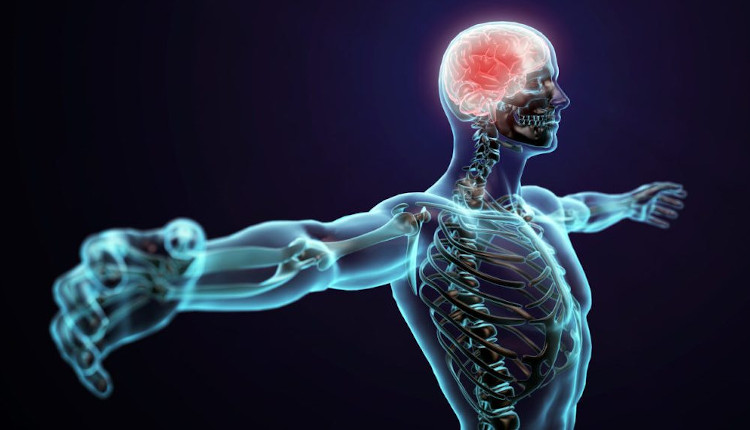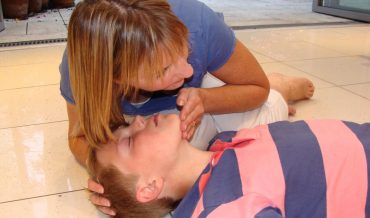Cardiac arrest is a common cause of death worldwide. When the heart stops beating, the rest of our body stops living. And with it, also our brain. Our cerebral activity doesn’t exist anymore, and our brain suffers a sort of blackout condition.
In this case, CPR and the defibrillator help to reduce the death rate, but is it sufficient to save to patients? When our brain undergoes a condition of oxygenation lack, damages are irreversible. So, what are the right procedures to increase the patient’s possibility of life after cardiac arrest?
We spoke with Claudio Sandroni, Professor at Dept. of Anaesthesiology and Intensive Care Università Cattolica del Sacro Cuore in Rome, Italy.
- Studies show that in the last decade, most people survive after a cardiac arrest in the pre-hospital setting. What is this rate? Could you please give some data?
Survival after out-of-hospital cardiac arrest (OHCA) is stable around 10% of all resuscitated patients, and this rate does not seem to have improved very much in recent years. There are of course exceptions. In a paper from Margey et published in 2011 and based on the Dublin cardiac arrest registry, a significant improvement of survival rate after OHCA between 2003 and 2008. That rate in fact improved from 2% and 6% to 11.3%. During the same period, survival from patients found in ventricular fibrillation increased from 21% to 33%. In a paper from Hasselqvist et al published in 2015, which describes the trends of survival for OHCA in 1990-2010 in Sweden, the percentage of a population trained in CPR produced a parallel rise in the percentage of bystander CPR, and after the contemporary introduction of telephone CPR, the rate of survival from OHCA rose from 7% to 15%.
- What are the risks for our brain? We all know that when a cardiac arrest occurs our brain stops being perfused.
The risks are pretty high. The brain is very sensitive to hypoxic-ischemic injury. Neurons cannot survive the lack of oxygen and nutrients, especially glucose, due to a stop of cerebral circulation. Following cardiac arrest, the consciousness is lost in just 30 seconds. The brain is more sensitive than the heart to hypoxic-ischemic injury. Unfortunately, sometimes even if CPR achieves recovery of spontaneous circulation (ROSC), the brain has suffered a significant injury. This is not entirely surprising since experimental evidence shows that CPR restores only about ¼ of the pre-arrest cerebral blood flow. Fortunately, both experimental and clinical evidence also show that the oxygen saturation of the brain blood (rSO2), which can be now measured noninvasively, improves during a well-performed CPR. As a result, both the oxygenation and perfusion of the brain also improve, and that’s why most patients eventually survive to hospital discharge after a cardiac arrest with an intact brain. Noninvasive measurement of brain oxygenation is a potential target to guide CPR in the future.
- What is the rate of mortality in the intensive care unit after a cardiac arrest?
In patients who initially have ROSC and are admitted to hospital after an OHCA, 2/3 die before hospital discharge, and among those who die, 2/3 do so because of hypoxic-ischemic brain injury (HIBI). Most of these deaths occur in the intensive care unit. Generally, mortality from cardiovascular instability is very high during the first 48 hours after ROSC; later, HIBI predominates as a cause of death. HIBI starts immediately after the arrest and it continues in the first few days after resuscitation.
- Can you tell us more about HIBI as a cause of death after resuscitation?
As I said before, the most important cause of death is HIBI, which is responsible for 2/3 of deaths in patients who are admitted to the hospital alive after OHCA but subsequently die before hospital discharge. Approximately 10% of patients who die (from all causes) after having been resuscitated with conventional CPR undergo brain death because HIBI causes irreversible damage to the entire brain. Recent studies showed that the rate of brain death after resuscitation is twice as high in patients who are resuscitated with extracorporeal CPR. This is because CPR in these patients lasts much longer so they are at higher risks of irreversible brain damage, and possibly even because patients who undergo extracorporeal circulation have a greater risk of intracranial bleeding. Another important cause of death in patients with very severe HIBI in most countries is the withdrawal of life-sustaining treatment, because their neurological outcome is predicted to be extremely poor, so that further treatment is considered to be futile.
- What about neurological prognostication after cardiac arrest? Why it is a time-dependent process?
Neurological prognostication consists of the assessment of the severity of HIBI in order to predict the final outcome of the patient. This is a very delicate and important process which occurs after resuscitation and the admission to the hospital. Prognostication is very important both in order to give correct information to the patient’s relatives and also because of most deaths caused by HIBI result from withdrawal of life-sustaining treatment following prognostication of a poor neurological outcome.
Neurological prognostication is based on a series of predictors that can be classified as follows: clinical examination, biomarkers, electrophysiological investigations (such as EEG) and imaging. Among them, clinical examination is the most important, it represents the starting point of every prognostic evaluation. Before performing it, we need to be sure that the patient is really comatose with minimal or no response to external stimuli, and that there is no interference from sedatives or muscle relaxants.
Prognostication is a time-dependent process for several reasons: first, because usually HIBI is not complete before three or four days after CA; secondly, because in the first two days after cardiac arrest cardiovascular instability is the most important cause of death, so it would make little sense to try to predict a neurological prognosis when mortality is still highly influenced by cardiovascular causes; thirdly, , because we need to be sure that no lingering effects on clinical examination from sedative drugs or therapeutic hypothermia exist before starting prognostication.
- In case of death of a patient resuscitated from cardiac arrest, what are the perspectives of organ donation?
Organ donation is an unintentional and probably under-recognized benefit of a failed resuscitation. As we said before, about 10% of patients who die after having been resuscitated from cardiac arrest and are admitted to an intensive care unit die from brain death and therefore are potential heart-beating organ donors. Moreover, in many countries, patients who are unsuccessfully resuscitated can become non-heart-beating organ donors (donors after cardiac death: DCDs). Data from literature show that the rate of success of the organs transplanted from patients who died after resuscitation from cardiac arrest are similar to those of organs retrieved from patients died because of a primary neurological injury and who did not undergo a cardiac arrest. This is especially true for kidneys. So, the whole-body ischemia-reperfusion injury has little effect on the potential of donation, if the potential donors are carefully screened.
YOU MIGHT FIND INTERESTING ALSO:




